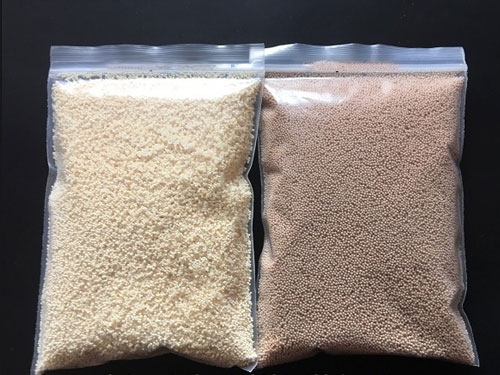成都森格尔环保科技有限公司
Chengdu senge environmental protection technology co.LTD
Consultation Hotline:02865357899
Production, Sales and Development of Ion Exchange Resin
成都森格尔环保科技有限公司
Chengdu senge environmental protection technology co.LTD
Consultation Hotline:02865357899
Production, Sales and Development of Ion Exchange Resin
Contact person: Manager Liu
Location: 028-65357899
Mobile phone: 15680686111
Mailbox: chengdu@sgrhb.com
Fax: 028-65357899
Email: chinaresin@sgrhb.com
Website: www.sgrhb.com
Website : en.sgrhb.com
Address: 79 Jiujin Street, Wuhou District, Chengdu City, Sichuan Province
In the process of using cation exchange resin, because of the contamination of harmful impurities (such as ferrite, organic matter, etc.), resin "poisoning" will occur. The colour of resin with iron poisoning changes from bright yellow (cation exchange resin) or milky white (anion exchange resin) to black in appearance.
ion exchange resin
There are four main reasons for the formation of iron poisoning in ion exchange resin: water source is groundwater with high iron content or surface water polluted by iron; iron carbide is produced by corrosion in intake pipeline or exchanger; iron impurity is contained in regenerant; and macromolecule organic matter is contained in water.

The selection of ion exchange resins is related to the following factors:
1. The more charges in the ionic band, the simpler it is to be adsorbed by the anionic exchange resin. For example, divalent ions are easier to adsorb than divalent ions.
2. For ions with the same charge, ions with larger atomic order are more easily adsorbed.
3. Compared with dilute solution, cheaper ions in concentrated solution are easily adsorbed by resin. Generally speaking, for H-type strong acidic anion exchange resin, the selection order of ions in water is discussed. For OH type strong basic anion exchange resin, the selection order of anions in water is discussed. The selectivity of anionic exchange resin is very useful for analyzing and judging the process of chemical water treatment.
Water quality control of resin intake:
1. Turbidity of water: the downstream regenerative AC is less than 5 mg/L and the convective regenerative AC is less than 2 mg/L. Ion exchange resin
2. Residual active chlorine: free chlorine < 0.1mg/L.
3. Chemical oxygen demand (COD) is less than 1 mg/L.
4. Iron content: Re-bed AC < 0.3mg/L, mixed-bed AC < 0.1mg/L.
After 10 to 20 weeks of operation, the contamination status of anionic and cationic AC resins was examined. When pollution is found, it should be dealt with in time by corresponding methods.
Chengdu Senger Environmental Technology Co., Ltd.
Record No: 蜀ICP备19000327号
Powered by Xiangyun Platform
Contact person: Manager Liu
Location: 028-65357899
Mobile phone: 15680686111
Email: chinaresin@sgrhb.com

